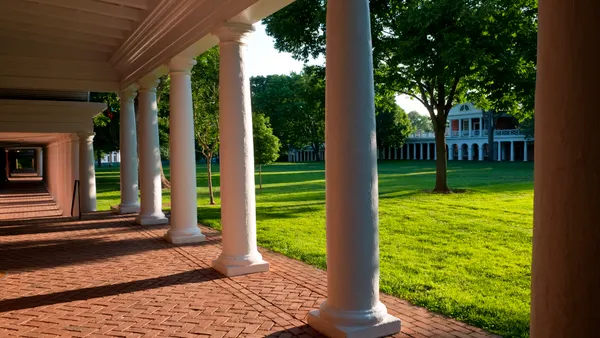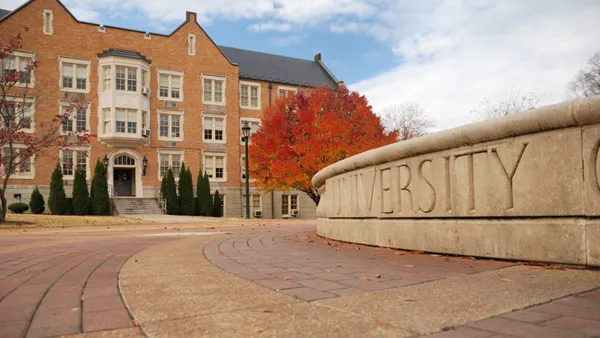J. W. Traphagan is an author, an anthropologist and a professor emeritus at the University of Texas at Austin.
Over the past several years, there has been a movement to establish a well-defined career path for faculty who are not on the tenure track, one that replaces the lecturer role in U.S. universities.
Many schools have created a “parallel” track for contract faculty, with ranks that mirror those of faculty in the tenure stream. Titles like assistant professor of practice, associate professor of instruction or professor of teaching were developed in part to change the traditional two-tiered system in which lecturers formed a poorly paid underclass of instructional staff.
Indeed, some administrators routinely talk about “faculty and lecturers.” And in some cases these administrators can be so oblivious to the derogatory nature of this juxtaposition that they speak this way during faculty meetings where lecturers are present. This makes it clear that the administrator does not see the contingent members of the department as part of the faculty, despite the fact that they usually do the bulk of the teaching.
In 2022, the American Association of University Professors published the first major study on tenure policies at American colleges and universities in almost 20 years.
The findings showed that in 2022 over 50% of higher education institutions had replaced tenure-eligible positions in the past five years with contingent faculty positions, a number that had been only about 17% in 2004.
By 2019, only 37% of faculty positions in the U.S. were tenure-track or tenured. Meanwhile, 43% were contingent part-time or adjunct, and 20% were full-time non-tenure-track.
The trend is clear.
Given these changes, the new career pathways for contract faculty are helpful because they can improve their status, giving them the title of professor. However, this system continues to reproduce a hierarchy within the academy — and in many institutions nontenure-eligible teaching faculty are paid significantly less than their tenure-eligible, research-focused colleagues.
This seems odd given that teaching is a primary mission of any higher education institution, including research universities. The teaching load for nontenure-track faculty is always heavier than for their tenure-track colleagues, so it’s not as though they have less work.
The ongoing inequities between teaching and research faculty remain a problem that should be broadly addressed. But there is a more pernicious issue that may, in fact, have been inflamed through growth of this parallel stream.
Despite good intentions to create career paths for contingent faculty, what higher education administrators have created, perhaps unintentionally, is a system representing another cog in the right-wing machine aimed at eliminating tenure.
Indeed, the shift to a model in which contingent faculty are the majority is far more damaging to the tenure system than are direct political attacks on tenure at public institutions in red states like Iowa, Florida and Missouri.
This is ironic because tenure was created to protect teaching faculty from meddling administrators and politicians. As Amherst College law professor Adam Sitze noted in an op-ed for Inside Higher Ed, the purpose of academic tenure “is to give professors the freedom to pursue lasting truths without being cowed either by the trustees and presidents who appoint them, or by powerful majorities who might be offended by their teachings or findings.” Tenure is foundational in a society that values freedom of inquiry and expression.
I’m suggesting the shift to contingent faculty represents a well-intentioned approach that winds up supporting attempts by right-wing groups to eliminate tenure for political reasons.
It subverts the entire tenure system. It eliminates tenure without openly calling for the elimination of tenure.
The justification for hiring more contingent faculty, of course, is not grounded in reducing tenured lines. It is often presented under the guise of budget crises that demand reducing the number of more expensive tenure-track faculty positions, even while the number of high-salary administrative positions endlessly continues to bloat.
This plays right into the hands of right-wing attempts to eliminate tenure.
Political pressure to eliminate tenure can be clearly seen and publicly resisted. And, of course, laws are revised and tenure can be reinstated if the political winds shift over time. But if university administrators effectively eliminate tenure by building faculties in which contingent positions are the majority as a cost-saving measure, it won’t matter. The idea of tenure will have evaporated along with tenure-track positions.
Tenure will be collateral damage in a neoliberal battle that right-wing politicians didn’t even need to fight.












